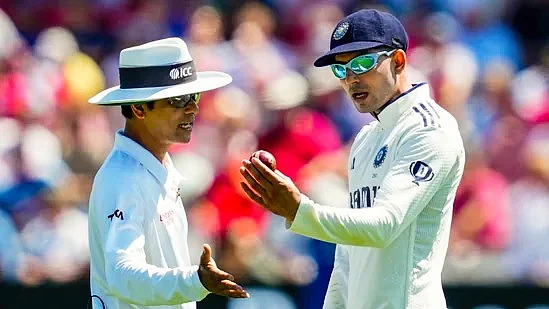India vs England series: Will fourth Test see change in quality of Duke balls?
Makers on the backfoot after sustained complaints, pledges to review entire manufacturing process

The debate over the quality of Dukes balls being used in the ongoing India-England Test series is refusing to go away, and for sound cricketing reasons. So much so that after initially trying to play down the complaints, the makers have pledged to look at the match balls used in the first three Tests, which grew softer long before the 80-over mark, when a new ball can be taken.
From Indian skipper Shubman Gill who voiced his concerns after the Edgbaston Test to TV pundit and former England cricketer Stuart Broad, the cricket community has been fairly vocal in pointing out the quality of the ball which saw time wasted in changing balls early on and making the contests somewhat lopsided in favour of batters. A cricket ball losing its hardness means it gets tougher for pace bowlers to derive bounce or movement, while batters have to get down to grafting, instead of playing shots, for runs.
The uproar, with the series tantalisingly poised 2-1 in England’s favour, has now forced Dilip Jajodia, owner of British Cricket Balls Ltd, to take a U-turn on his earlier stance a week back. ‘’Players these days are like crybabies,’’ Jajodia had said in an interview, but seemed on the backfoot while speaking to BBC Sport on Friday. “We will take it (balls used for first three Tests) away, inspect and then start talking to the tanner, talking about all of the raw materials and everything. Everything we do will be reviewed, and then if we think some changes need to be made or tightened up, we will.”
It’s an anomaly in international cricket that the choice of balls in Test cricket lies with the host nation instead of a standard specification, with India using SG balls, Australia the harder Kookaburra, and England the Dukes, renowned for offering prolonged movement in seam-friendly conditions. However, the chief complaint in this series is that defining trait seems to be missing.
On his X handle, Broad, the second highest wicket-taker in Tests for England who hunted in pair with James Anderson, posted recently: ‘’The cricket ball should be like a fine wicketkeeper. Barely noticed. We are having to talk too much about the ball because it is such an issue and & being changed virtually every innings. Unacceptable. Feels like it’s been five years now. Dukes have a problem. They need to fix it. A ball should last 80 overs, not 10.’’ Jajodia’s repartee to Broad earlier was: ‘’Ask Stuart how many wickets he got with the Dukes ball. I rest my case.’’
There has been speculation in some quarters as to whether the changes in the ball are intentional to suit a more batting-friendly approach (read: Bazball) or if it’s purely a manufacturing lapse. An interesting argument on the part of Dukes is that while they make all effort to adhere to the highest standards, they actually have less control over the material. In 2022 during the pandemic, an issue with leather production and it being treated with wrong chemicals for the wrong amount of time led to a batch of poor quality Dukes balls.
In all three Tests so far, one witnessed the grass being mowed off in the build-up to the Tests at Headingley, Edgbaston and Lord’s, and the deck finally becoming a featherbed for batters. Add to this the unusually dry summer in England this year, which means batters have been having a relatively easy time — though the likes of Jasprit Bumrah, Mohammed Siraj, Akash Deep, and Jofra Archer have managed to extract something unpredictable out of the pitches.
Whether any adjustment about the quality of the balls can be made in time for the fourth Test starting 23 July remains unclear, but the scrutiny around the Dukes ball is unlikely to go away anytime soon.
Follow us on: Facebook, Twitter, Google News, Instagram
Join our official telegram channel (@nationalherald) and stay updated with the latest headlines
